The lemon tree (Citrus limon) is a member of the Citrus genus and is part of the Rute family. This plant is native to India, China and the tropical Pacific islands. According to experts, this tree is a hybrid that was formed quite by accident in natural conditions. Lemon developed and grew as a separate species of the genus Citrus. It was first cultivated in Pakistan and India in the 12th century. After some time, this species became widespread in the Middle East, North Africa and Southern Europe. Today this tree is widespread in culture, and it is grown in places with a mild and warm subtropical climate. At the same time, the annual yield of lemon fruits is approximately 14 million tons. The following countries are leading in the cultivation of lemons: Mexico, USA, Italy and India.
The lemon tree is also quite widespread in indoor culture in various countries. At the same time, they began to grow it at home more than 300 years ago. Homemade lemon is very beautiful, and some varieties also have aromatic and very healthy fruits that are in no way inferior in taste to those collected from trees grown in the open field.
Content
Brief description of cultivation
- Bloom... Indoors, a lemon tree can bloom at different times of the year.
- Illumination... This culture grows well and develops with a short daylight hours. It is recommended to put the tree on a window of east or west orientation, while in the afternoon, when the sun is most active, it should be shaded from direct rays. In order for the crown of the tree to be symmetrical, it should be turned 10 degrees around its axis (in one direction) regularly every one and a half weeks. In winter, the plant needs additional lighting for 5–6 hours every day.
- Temperature regime... During the growing season - about 17 degrees, during the formation of buds - not higher than 14-18 degrees, during the period of active growth of fruits - from 22 degrees. In winter, the bush is kept in a cool place - from 12 to 14 degrees.
- Watering rules... From May to early autumn, lemon is watered every day. After that, the soil in the pot must be moistened no more than once every 3-4 days.
- Air humidity... The plant needs systematic spraying of foliage from a spray bottle with pre-boiled water, the temperature of which is slightly higher than room temperature. Most often, the bush should be moistened on hot summer days and in winter, if the lemon is in the room where the heating devices are located.
- Fertilizer... Such a tree is fed with complex mineral fertilizer, while it must be applied to the substrate throughout the entire growing season. Adult bushes are fed once every 20-30 days, and young ones - once every 6 weeks. From the second half of the autumn period, a gradual reduction in the frequency of fertilizing is required: if the lemon is in a cool room at rest, then it is not fed at all, and if it is in a warm room, fertilizers are applied to the soil mixture periodically once every 6 weeks. The plant is fed with a nutrient solution only after preliminary watering.
- Dormant period... In winter, it is not pronounced.
- Transfer... In spring, at the very beginning of the growing season. A young plant is subjected to this procedure once every 1-2 years. An adult tree is transplanted only when the root system becomes cramped in the container, and the roots appear from the drainage holes.
- Reproduction methods... Seed method, grafting and grafting.
- Pests... Whiteflies, mealybugs, spider mites, common and root aphids, scale insects.
- Diseases... Tristeza, homoz, anthracnose, root rot, chlorosis, citrus cancer, scab, leaf viral mosaic and melseco.
Features of homemade lemon
The home lemon tree is an evergreen, low-growing plant that is a perennial. Its powerful branches are covered with thorns. In young shoots, the upper part has a purple-purple color. Green leaf plates leathery to the touch have an oblong-oval shape, and they have teeth on the edge. On the surface of the foliage, there are many glands, inside of which there is an essential oil. The life span of one leaf plate is from two to three years.
The bud formation process takes approximately 35–40 days. In this case, the flower after opening does not fade for 7-9 weeks. A very pleasant aroma emanates from the flowering tree. It can take more than nine months from the moment the ovaries are formed until the fruits are fully ripe. Homemade lemon has an egg-shaped fruit shape, with the nipple located at the top. It is covered with a yellow skin, the surface of which is lumpy or pitted. From the fruit comes a sharp specific aroma characteristic of lemons. The juicy pulp is divided into 9-14 slices, it is colored yellowish-green and has a sour taste. Inside the fruit lobules there are several white ovoid irregular seeds. From above they are covered with a parchment shell, which is of high density.
Indoor pitted lemon
Features of seed reproduction
Growing homemade lemon from seeds is pretty easy. At the same time, you will not have to look for seed material for a long time, since the seeds can be taken from fruits purchased in a regular store. To do this, you should choose a well-ripened fruit, the color of which should be uniform and yellow. In this case, you should choose those bones that are well formed and fully matured.
To plant seeds, you should prepare a certain soil mixture.To do this, take a ready-made flower soil mixture purchased in the store and combine it with peat (1: 1). In this case, the finished substrate should be light and well-drained, and its pH should be from 6.6 to 7.0.
How to plant a lemon
Take a small container and make a good drainage layer on the bottom. Then fill it with the prepared soil mixture. Remove the seeds from the fruit and immediately immerse them in the soil mixture 10–20 mm. Place the container in a well-lit place, the optimum air temperature is from 18 to 22 degrees. Keep the substrate slightly damp at all times. The first shoots should appear after about half a month after sowing.
Seedling care
For watering lemon seedlings that have emerged from seeds, water is used, the temperature of which should be close to room temperature. Do not forget to regularly loosen the surface of the substrate in pots, and this must be done very carefully. After the seedlings have formed 2 true leaf plates, the most developed and strong plants are chosen, and they are planted in individual pots, reaching 10 centimeters in diameter. Do not forget to cover them with a glass jar on top to maintain the necessary microclimate for better rooting. The seedlings are provided with daily ventilation, for this, the shelter should be removed from them for a short time once a day. The next transplant into larger containers is carried out only after the height of the seedlings is 15–20 centimeters. The bushes should be transplanted very carefully, trying to keep the clod of earth intact. The transshipment method is excellent for this.
When choosing a new pot, remember that it should be about 50-60 mm larger than the old one. If you take a larger container, then moisture will begin to accumulate in the substrate, which will not be occupied by roots, which will lead to acidification. At the bottom of the container, make a good drainage layer; for this you can use pieces of foam, expanded clay, pebbles or charcoal. For transplanting, you can take a ready-made flower soil mixture bought in a specialized store, and garden soil mixed with a small amount of humus is also suitable. When replanting a bush, make sure that its root collar remains at the same level as in the old pot. If it is buried, then this can cause rot on it.


Watch this video on YouTube
Lemon care at home
Growing a lemon indoors is quite difficult, but the grower will be generously rewarded for his efforts. The first thing you need to pay attention to is the creation of suitable conditions for a given plant.
Illumination
As mentioned above, the lemon tree is a short-day plant. Therefore, it quite normally tolerates a lack of light. If the daylight hours are long, then this can cause active growth of the lemon tree, but due to this, fruiting may be delayed.
This culture feels best on an east or south orientation window. But do not forget to protect the bush from the scorching rays of the sun in the afternoon. In order for the crown to be neat and attractive, the tree should be rotated 10 degrees around its axis every 1.5 weeks. In the event that the bush is warm in winter and it is actively growing, then it should be provided with daily supplementary lighting from 5 to 6 hours.
Temperature regime
During intensive foliage growth, it is recommended that the tree be kept cool (about 17 degrees). During budding, the plant feels comfortable at an air temperature of 14 to 18 degrees. If the room is warmer, it can cause buds and ovaries to fly around. But during the period of active growth, it is recommended to rearrange the tree to a warmer place (from 22 degrees and above).Once the weather is warm outside, the plant can be transferred to the balcony, garden or terrace. However, be careful, because the tree reacts negatively to sudden temperature changes. That is why it is recommended to cover it or wrap it up every evening, and in the morning the shelter is removed.
In winter, the best temperature for a lemon tree is 12-14 degrees. Moreover, it is placed away from working heating appliances. In this case, the plant will be able to enter a dormant state and rest well before the next growing season.
Watering lemon
Homemade lemon should be watered every day from May to early fall. It is necessary to moisten the soil mixture at other times approximately 1 time in 3-4 days. When watering, the soil mixture must be well saturated with moisture, and before the next moistening, its surface must definitely dry out slightly.
Water suitable for irrigation should settle well (at least 24 hours), but it is better to pass it through a filter. Its temperature should be close to room temperature. Make sure that no stagnation of water occurs in the soil mixture. In the event that the roots of the tree will regularly suffer from stagnation of moisture in them, then an urgent transplant with a complete replacement of the soil mixture may be required.
Air humidity
Indoor lemon needs regular moistening of foliage from a spray bottle. Moreover, the water must be pre-boiled and warm. If in winter the bush is warm, and even in such a room where the air is dry with working heating devices, then its foliage should be sprayed more often. But do not overdo it, because excess moisture can cause the development of fungal disease. In the event that in winter the plant is at rest and stands in a cool place, then it is not necessary to moisturize it.
Top dressing
Indoor lemon needs systematic feeding. Complex mineral fertilizers are perfect for this. While the bush is young, fertilizer is applied to the soil mixture regularly once every 6 weeks. An adult tree needs more frequent feeding: in the spring and summer, the nutrient mixture is applied to the soil once every 15–20 days. A couple of hours before feeding, the soil mixture in the pot must be moistened well with plain water suitable for irrigation.
From the second half of October, feeding must be reduced. If in winter time an adult tree still grows as actively as in summer, then it should be fed once every 4–6 weeks. However, if it is at rest, then there is no need to fertilize the soil mixture.
From organics, the lemon tree responds best to feeding with an ash extract, and also with an infusion of fresh manure, which is diluted with water in a ratio of 1: 5 or 1: 6. An infusion of birch or quinoa foliage is also suitable. For its preparation, a ½ part glass jar is filled with finely chopped leaves, then so much water is poured in so that the container is full. The product will be ready after two or three days. It is necessary to apply organic fertilizers to the soil mixture with the same frequency as the mineral complex.
Often, flower growers have such a problem: the tree is actively increasing its green mass and at the same time does not set fruit. In this case, the fertilizer should be replaced. It should contain a minimum of nitrogen and a maximum of phosphorus.
Lemon pruning
Homemade lemon should be pruned systematically. You can form its crown in different ways, this one depends on what it is grown for. In the event that it is needed only to decorate the room, then the formation of the crown is carried out in such a way that it is small and compact. However, if you want to get fragrant fruits from a tree, then its crown is formed in a different way.
It is necessary to leave a certain number of main branches and growing shoots in a fruiting tree. Moreover, most of these shoots should be from fruit wood.
To give the crown the correct shape, you should resort to the pinching method.When the first zero shoot reaches 20 to 25 centimeters in length, it will need to be pinched. After some time, the shoot is pinched, stepping back from the old pinch from 15 to 20 centimeters. At the same time, pay attention to the fact that there should be four well-developed buds on the shoot between the two nips. After a while, 3 or 4 main stems will appear from them, which should grow in different directions.
The first-order stems are pinched after 20-30 centimeters. And upon completion of the ripening of these shoots, they will need pruning, while they will need to step back about 50 mm from the pinching site. You should also remember that each previous stem should be about 50 mm longer than the next. You need to finish the formation of the crown on the shoots of the fourth order.
In the event that pruning is not carried out, then very long branches will grow at the tree, while the formation of stems of the third and fourth order will be postponed indefinitely, namely, ovaries are formed on them, and later fruits grow.
The lemon tree is cut not only for crown formation, but also for sanitary purposes. In this case, you need to cut out all the weakened branches, as well as those that are directed towards the inside of the crown.


Watch this video on YouTube
Possible problems
Lemon turns yellow
Often, growers are faced with such a problem as yellowing of homemade lemon. This can happen for a variety of reasons, for example:
- the tree needs urgent feeding;
- a spider mite has settled on the plant;
- the room has excessively low air humidity;
- during wintering, the bush is in a very warm room.
Try to understand what is the cause of the problems with the plant and eliminate them. At the same time, in order to get rid of spider mites, it will be necessary to treat the plant with Akarin, Aktellik, Fitoverm or Kleschevit. If the tree is in conditions suitable for it both in summer and in winter, and you also feed and moisturize it in a timely manner, then it will be strong, and its foliage will be green.
Falling foliage
Also, quite often flower growers are faced with such a problem as leaf fall. As a rule, this is due to the fact that sucking pests - spider mites - have settled on the plant. They suck the juice from the leaf plates, and they die off and fly around. To get rid of such a pest, you will need to treat the tree with a pesticide solution (see in the previous section). However, there are also folk ways of dealing with spider mites. For example, you can prepare an onion infusion: combine 200 ml of water and 1 tsp. onion chopped on a grater, the product will be ready after 2 days.
Also, the flying around of the foliage may be due to the fact that the plant is watered too rarely or poorly, and also with low air humidity. Remember that lemon needs regular watering and hydration, especially on hot summer days.


Watch this video on YouTube
Lemon dries
Sometimes the tips of the leaf plates begin to dry out actively, while they turn brown. This can happen due to too low humidity or too little watering.
It also happens that the foliage dries up and curls. This is due to a violation of the rules of care. Before you take any action, you need to understand what your mistake is. Remember that the tree needs a lot of bright light with shade from the rays of the sun in the afternoon, it also needs to be regularly watered and fed on time. And also do not forget to provide the plant with suitable conditions during wintering.
Pests
In addition to spider mites, aphids, scale insects, whiteflies or mealybugs can settle on a lemon tree. In order to get rid of such harmful insects, garlic infusion is often used.For its preparation, combine 1 liter of pure water and from 150 to 170 g of finely chopped garlic cloves. The container is tightly closed, and the mixture is left for 5 days. Then the infusion is filtered and diluted with water: for 1 liter of water 6 mg of the agent. They need to spray the tree. However, such an infusion can help only when there are few pests on the plant. With a large accumulation of pests, a solution of an insecticidal preparation is used to destroy them.
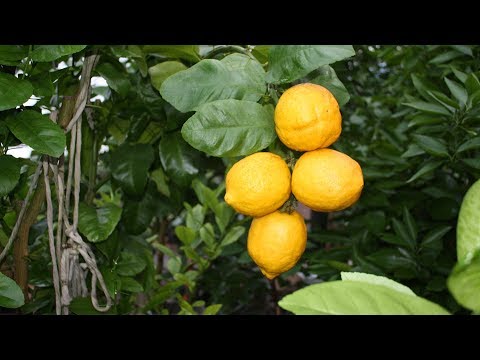

Watch this video on YouTube
Lemon propagation
Cuttings
How to grow homemade lemon from seeds was described above. It is also often propagated by cuttings. First, they should be prepared. To do this, cut off the stems about 10 centimeters long and at least 0.4 centimeters thick. The upper cut is made above the kidney, and the lower one is made under the kidney. Also note that there should be 3 or 4 fully formed buds and two or three leaf plates on each segment. The sections are treated with a root growth stimulating agent. After that, they are immersed ½ of their height in a container with water, while the lower cut should be below. After three days, they will need to be planted in pots filled with a substrate, which included: humus, coarse sand and flower soil mixture (taken in equal shares). The cuttings should be deepened into the substrate by 30 mm. Since the planted sections have no roots, they cannot absorb moisture from the substrate. That is why they should be moistened from a spray bottle several times a day, using for this purpose settled water, the temperature of which is slightly higher than room temperature. Also make sure that the potting soil is slightly damp at all times. The fastest growing rootlets in cuttings occurs at an air temperature of 20 to 25 degrees. If done correctly, the cuttings will take root after 30–45 days. After that, they are planted in individual small pots.
How to plant lemon
In order for indoor lemon grafting to be successful, a high-quality rootstock should be found. You can grow it yourself from the seed. The seedling should be 2-3 years old, while its trunk should be no more than 15 mm in diameter. For grafting, you can use the rootstocks of other citrus plants.
A completely healthy adult lemon tree is chosen for cutting the scion. To do this, a fully ripe one-year-old shoot is cut off, which did not have time to lignify. Cut off all the leaf plates from the scion, while leaving their petioles, and also try not to injure the kidneys in the sinuses. If necessary, you can store cut scions in a cool place for two to three days, after wrapping them in a damp cloth. And if you put them in the refrigerator on the vegetable shelf, then they can lie for 15 to 20 days. However, experts recommend that the preparation of grafts be carried out before inoculation.
Lemon is grafted during the growing season, and spring is considered the best time for this. You will need an eyepiece knife for the procedure. You can replace it with an ordinary, very sharp knife, which should be pre-disinfected.
Step-by-step instruction:
- To begin with, a T-shaped incision is made on the stem of the stock. Bend the corners of the bark very carefully.
- A bud should be cut from the scion along with the petiole and shield (this is a small part of the bark with a thin layer of wood). The shield must be large enough to fit easily into the cut made on the stem.
- Take the scion by the petiole and insert its shield inside the T-notch. In this case, you cannot touch the cut points with your hands.
- The bark is pressed very tightly and the site of inoculation under the kidney and above it is fixed with an ordinary plaster or a special eyepiece tape.
Many growers are reinsured and graft 2-3 buds at once. If everything goes well, the kidney should take root after about 20 days.If you notice that the petiole of the scion turned yellow and fell off, then this means that the vaccination was successful. Shorten the stem of the scion by stepping up 10 centimeters from the graft site. Then remove the tape and tear off any stems that have grown on the trunk below the grafting site.
You can inoculate a lemon not only with a kidney, but also with a handle, as well as by grafting into a side cut.
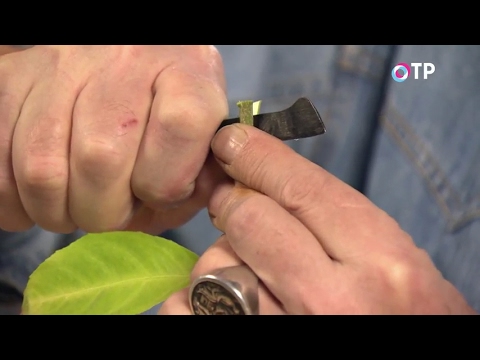

Watch this video on YouTube
Homemade lemon varieties with photos
For cultivation in room conditions, as a rule, medium- and low-growing varieties of lemon are chosen. Among themselves, the varieties differ in the shape and size of the crown, the size, appearance and quality of the fruit, as well as the ability to adapt to growing conditions. Below will be described those varieties of homemade lemon that are most popular with flower growers.
Pavlovsky lemon
This variety was born as a result of the so-called "folk selection". It was bred over 100 years ago in the village of Pavlovo, which is located near Nizhny Novgorod. This variety is most commonly grown at home. The height of such a plant varies from 150 to 200 cm, while its compact rounded crown in diameter can reach about 100 cm.
Within 1 year, from twenty to forty fruits can form on one adult tree, which are much tastier and better than those lemons that grow on trees growing in open ground. Often seeds are completely absent in fruits, or there are very few of them. However, there are also such fruits in which there are from one to two dozen seeds. Lemons are covered with a smooth glossy rough or slightly bumpy rind on top, the thickness of which is about 0.5 cm. If desired, the pulp of the fruit can be eaten with the rind. Lemons reach 50–70 mm in diameter, and about 100 mm in length, their average weight is from 120 to 150 grams. However, there are also fruits that weigh about half a kilogram.
Meyer's lemon, or Chinese dwarf
This variety first came from China to America and, having gained immense popularity there, began to rapidly spread throughout Europe. This variety is distinguished by a very high yield. It is believed that this variety originated from the red-orange Cantonese lemon. However, some experts believe that it is a natural hybrid between orange and lemon. Such a tree reaches a height of only 100–150 cm. Its lush crown, shaped like a ball, has a small number of thorns.
Average fruit weight is about 150 grams. Their peel is thin, rich yellow or orange. The juicy pulp has a slightly acidic taste with a slight bitterness. This plant is early maturing.
Novogruzinsky
The tree grows up to 200 cm in height and even more. A large number of thorns are located on the spreading crown. Elliptical or round yellow fruits weigh about 150 grams. They are covered with a glossy thin skin, and their flesh is very tasty. If the plant is well looked after, then within a year it can give 100-200 fruits. Moreover, this variety is distinguished by its unpretentiousness and undemanding care.
Lisbon
The homeland of this variety is Portugal. But he only became really popular when he was in Australia. It is fast growing and can reach two meters in height. Powerful branches form a dense crown, while there are many thorns on them. Within 1 year, about six dozen yellow fruits are formed on an adult tree, which have an average weight of about 150 grams. However, sometimes the fruits grow up to 0.5 kg. They are oval, while their top is slightly beveled, covered with a thick, slightly ribbed rind on top. The pulp has a sour, but rather pleasant taste. The variety easily adapts to new growing conditions and can grow normally in a dry room.
Genoa
This fruitful plant, created by breeders in Italy, came to the middle latitudes from the United States. Its height is about 1.3 m. The lush crown is almost devoid of thorns. Small elongated (about 120 grams) fruits are covered with a yellowish-green peel, rough to the touch. The pulp is juicy and fragrant. About 180 lemons are formed on the plant during the year.
Maykop lemon
The unpretentious and productive variety has a height of about 1.3 m. It has several forms. The oblong oval-shaped fruits weigh about 150-170 grams and have a small thickening on the lower part. The glossy thin skin has a ribbed surface.
Anniversary
The homeland of the variety is Uzbekistan. It was created by crossing Tashkent and Novogruzinsky lemon. The plant is shade-loving, unpretentious and early maturity. Rounded large lemons are covered with a rather thick yellow skin. They weigh on average from 0.5 to 0.6 kg.
Ponderosa
This hybrid between lemon and citron is natural. It is distinguished by its very high unpretentiousness, and easily tolerates high air temperatures and drought. The height of a bush with a spreading crown varies from 150 to 180 cm. Round or oval lemons are covered with a rough thick rind of a rich yellow hue, their average weight is about half a kilogram. Delicious sour and juicy pulp is tinged with a greenish tint. This early maturing plant is demanding on the composition of the soil.
Lunario
This hybrid between lemon and papeda is highly productive and decorative. He was born in Sicily in the 19th century. It was named so because its bloom begins on the new moon. A small tree (about 50 cm) covered with many small thorns. Oblong-elliptical or ovoid lemons are covered with a glossy smooth skin of a bright yellow hue. The fragrant yellowish-green pulp is characterized by weak juiciness, there are 10 or 11 seeds inside it.
Villa Franca
The variety appeared in America. The height of the tree is about 1.3 m, there are few thorns on it. The lush foliage is painted in an emerald green hue. Wedge-shaped oblong-oval fruits with blunt nipple are smooth to the touch. The yellowish pulp is juicy, tasty and fragrant, protected by a dense skin. Average weight is about 100 grams.
Irkutsk large-fruited
This variety was not so long ago bred in Russia, it is distinguished by its photophilousness. A medium-sized tree has a crown that does not need to be shaped. The fruits are covered with a not too thick skin, the surface of which is bumpy. Their average weight is 0.7 kilograms, but there are specimens up to 1.5 kilograms.
Kursk
The homeland of this variety is Russia. It was bred using the Novogruzinsky variety. This plant is resistant to drought, cold and shade, and is also early maturing and high yielding. The height of the tree varies from 1.5 to 1.8 m. Covered with thin skin, lemons weigh about 130 grams.
Commune
The variety originated in Italy and is very popular here. It is high yielding. A medium-sized tree with a lush crown has small thorns, which are relatively few. Oval large fruits have a delicate fragrant juicy pulp, the taste of which is strongly acidic. There are very few seeds in them. The surface of the not too thick peel is slightly bumpy.
In addition to these varieties at home, they are still widely cultivated such as: New Zealand, Tashkent, Moskovsky, Mezensky, Uralsky room, etc.
Lemon properties: harm and benefit
Beneficial features
The composition of lemon fruits includes many useful substances: malic and citric acid, pectins, potassium, manganese, iron, copper, iodine, sugars, phytoncides and flavonoids, vitamins A, B, P, D, C and group B (B2, B1, B9), as well as fiber. Thanks to such a rich composition, lemon has a refreshing, antimicrobial, tonic, antipyretic and even firming effect.
In addition, the juice contains citrine.Together with vitamin C, it normalizes redox and metabolic processes, and also helps to strengthen the vascular walls. This fruit contributes to the healing of the body when affected by the flu. But only if it is used together with herbal tea made from plantain, sage, mint and horsetail.
This citrus fruit helps to normalize the digestive processes, while cleaning the body of toxins and toxins. It is also used for infections of the oral cavity and respiratory tract. It also helps to cleanse the skin of boils and rashes, and completely eliminate or relieve migraine pain. Lemon has a diuretic effect, reduces the acidity of gastric juice. Both the peel and juice have potent antimicrobial properties. In this case, foliage is often used to lower body temperature. It also strengthens the immune system due to the large amount of vitamin C.
Lemon is included in the composition of a large number of drugs that have anti-inflammatory, antimicrobial, anthelmintic, wound-healing and immunomodulatory effects. And it is also contained in those drugs that help reduce the manifestation of sclerosis. In case of lung diseases, vitamin deficiency, atherosclerosis, poisoning and hypovitaminosis, it is recommended to include this fruit in your diet.
Rinsing your mouth with lemon juice will help strengthen the enamel of your teeth and gums. Baths with such juice help with tired feet and heavy sweating. Systematic consumption of this citrus in food is the prevention of the following diseases: colds, tonsillitis, tonsillitis, vitamin deficiency, urolithiasis and cholelithiasis, gout, atherosclerosis and diabetes mellitus, as well as many others.
Contraindications
Lemon should not be eaten with increased acidity of the stomach, with gastritis, hepatitis, and even with inflammation of the gallbladder, kidneys and intestines. You should also be careful with pancreatitis and hypertension. Allergies can develop due to the chemicals used by the suppliers. Sometimes this citrus causes an attack of heartburn, and it can also cause irritation when the mucous membrane of the nose or throat is inflamed.


Watch this video on YouTube

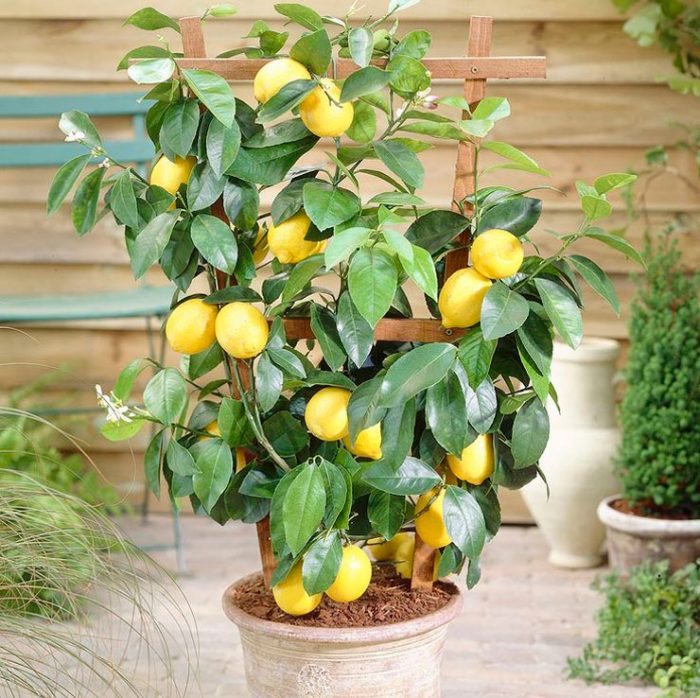
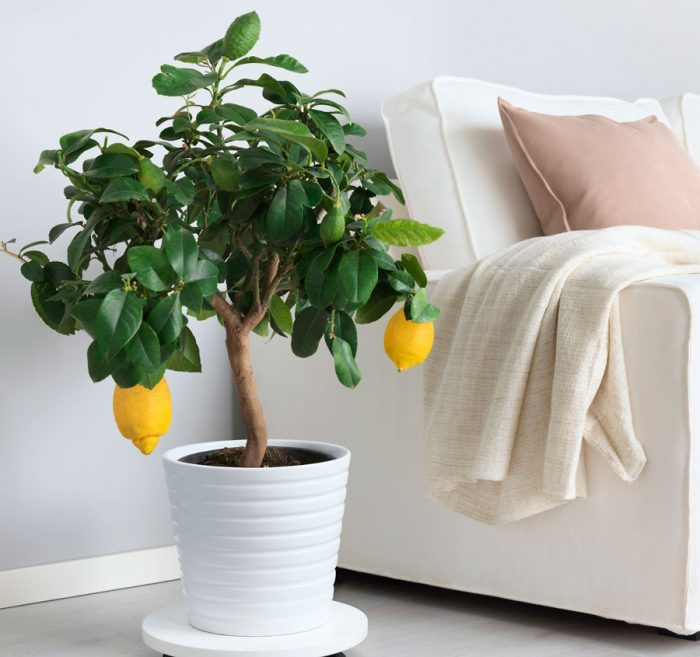
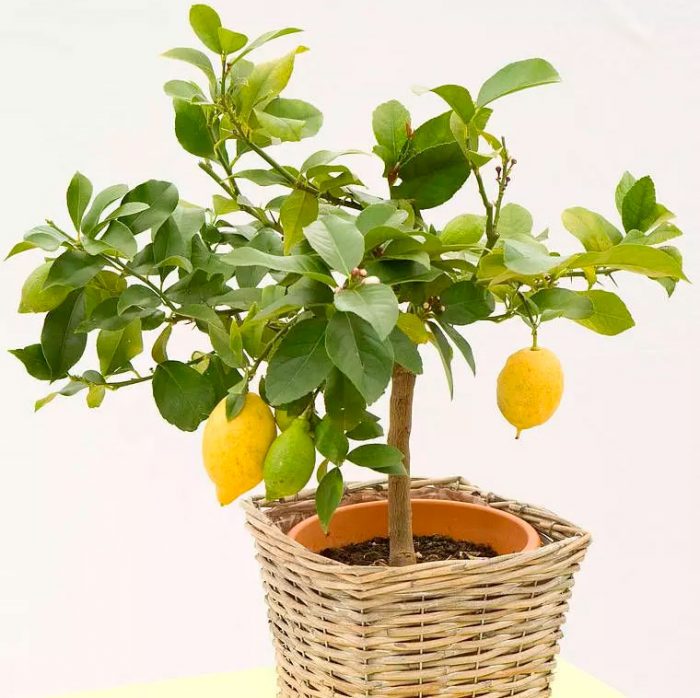
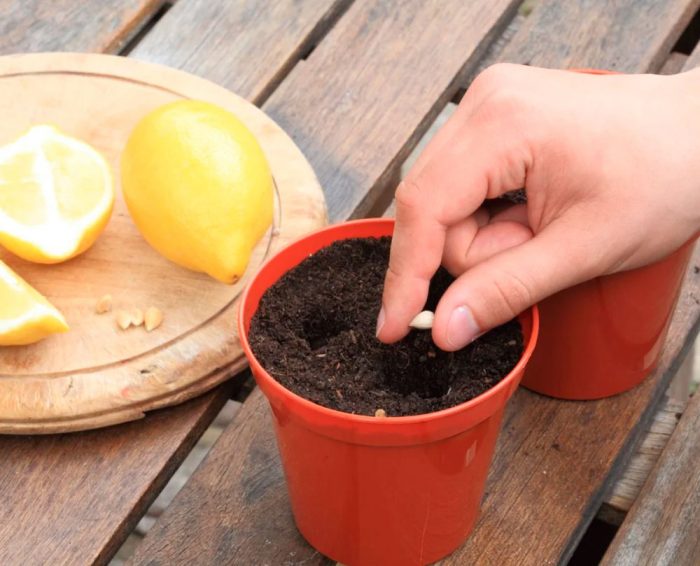

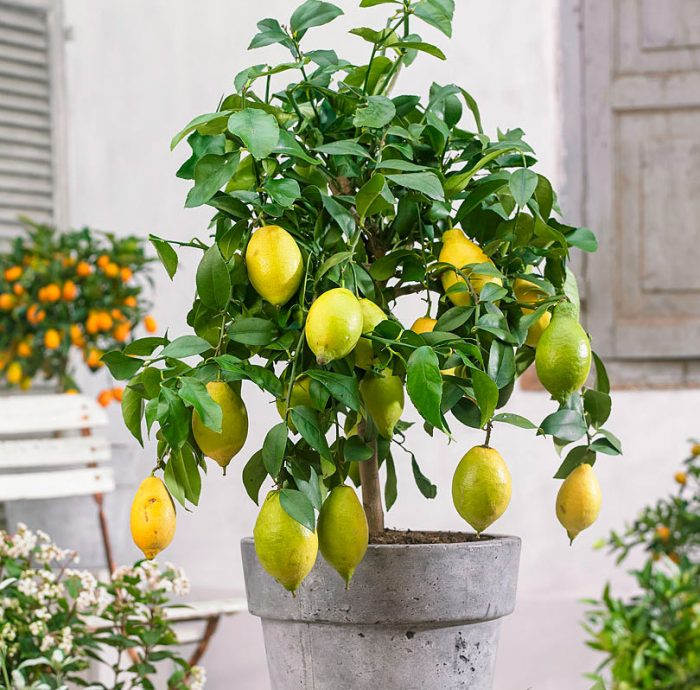
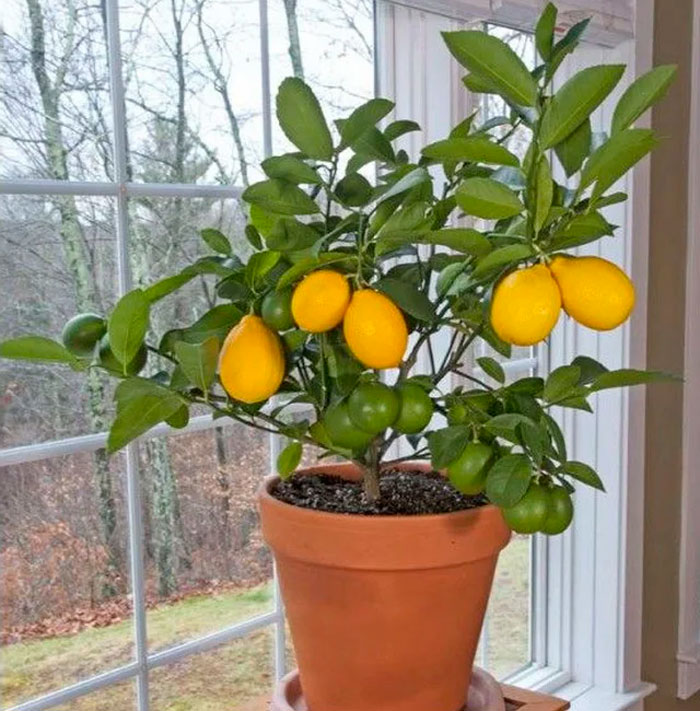
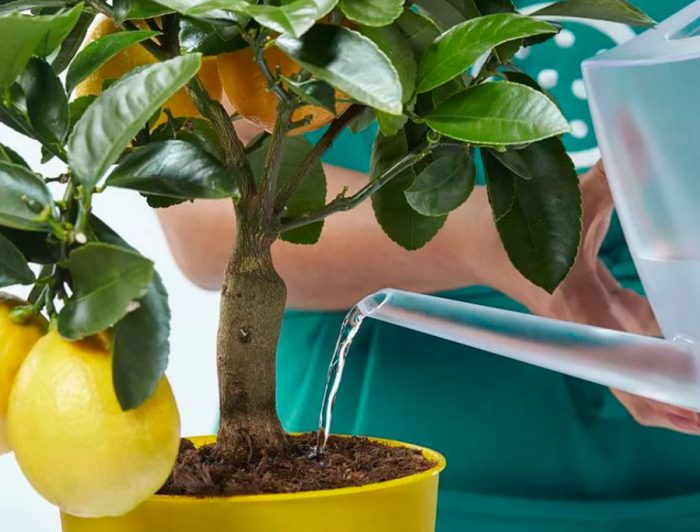
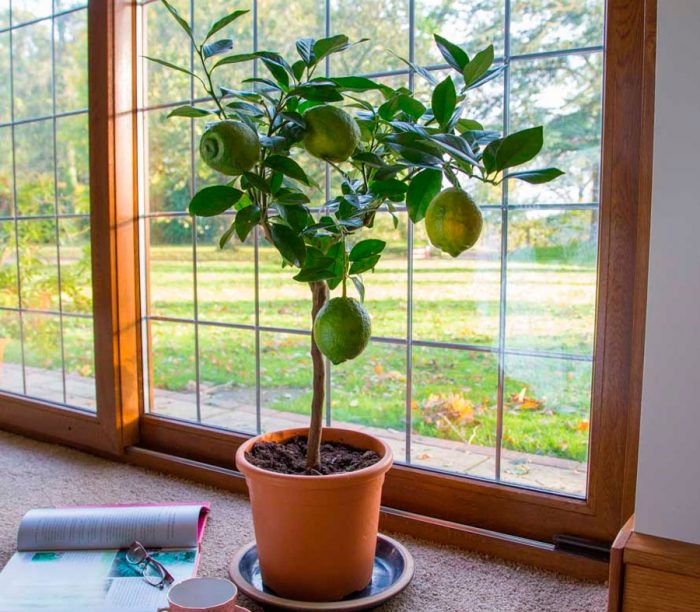
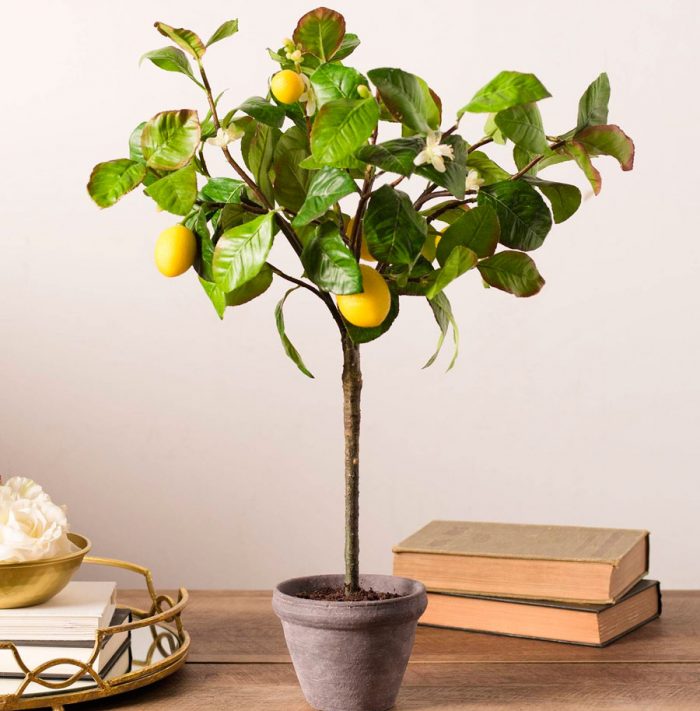
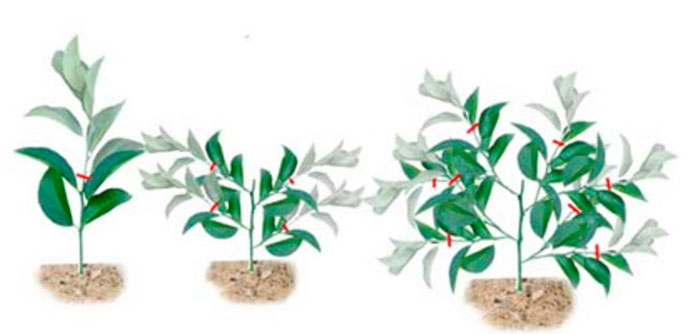

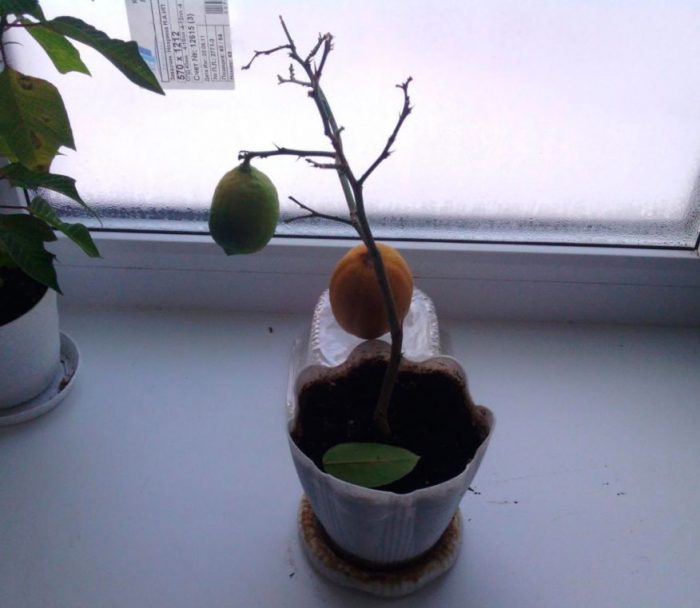

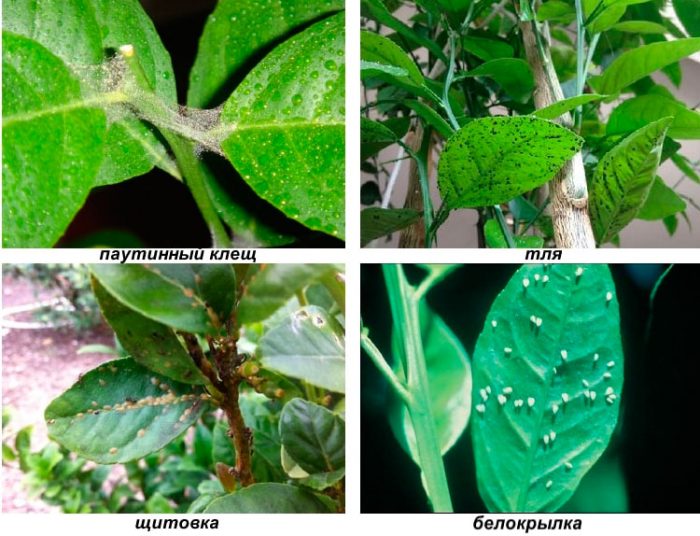
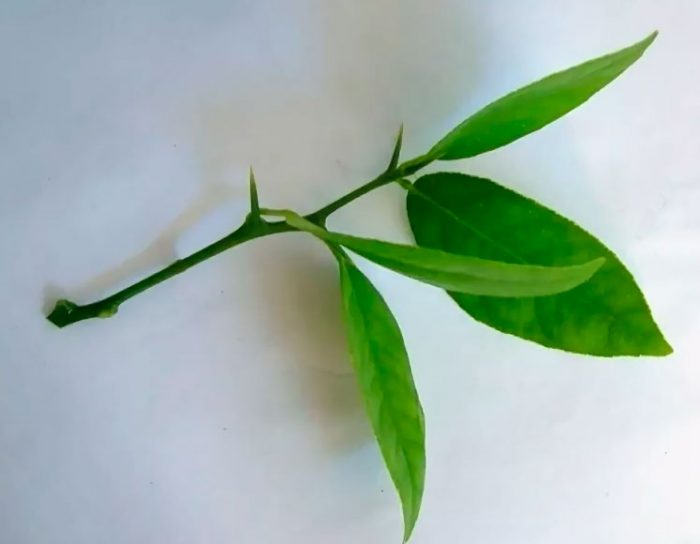

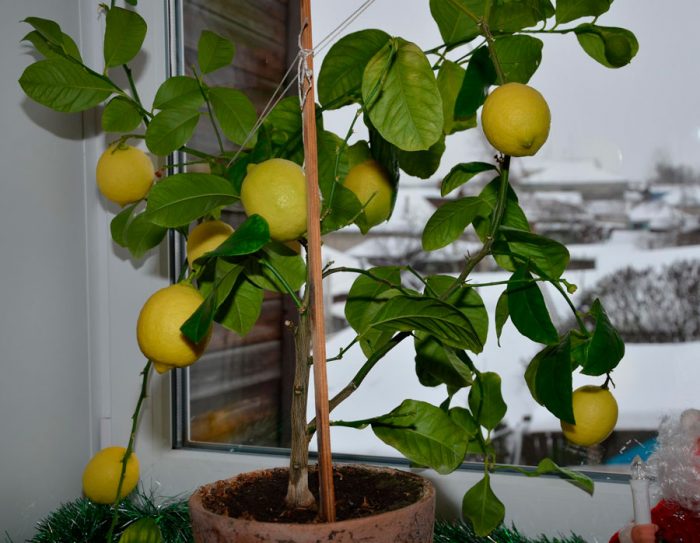
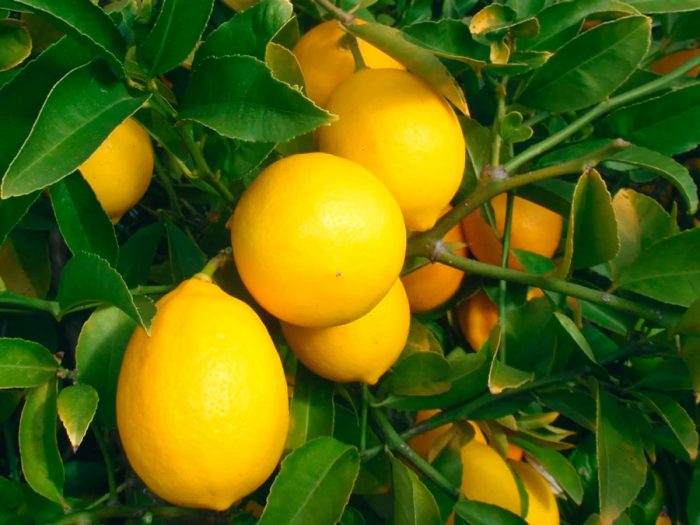
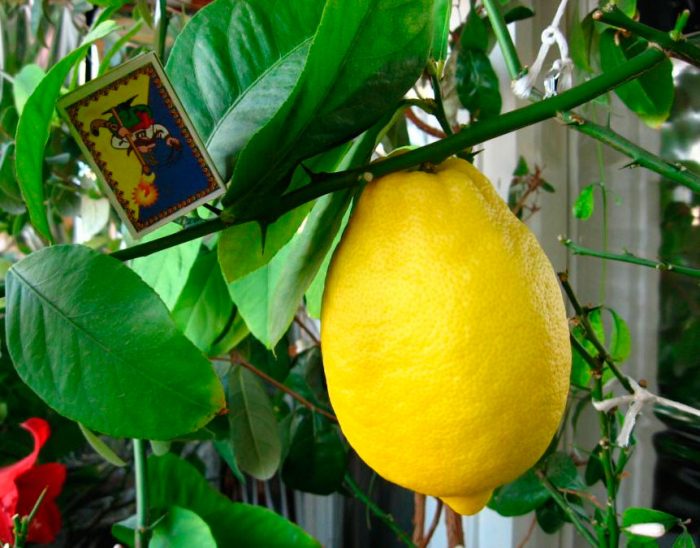
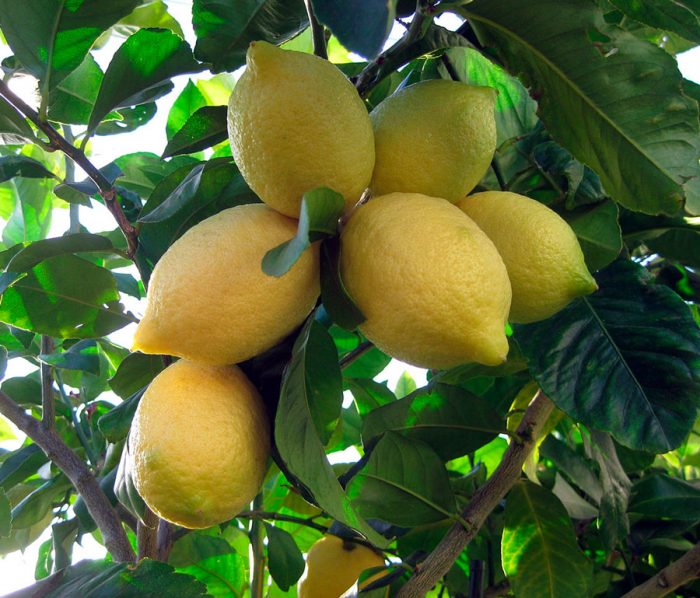
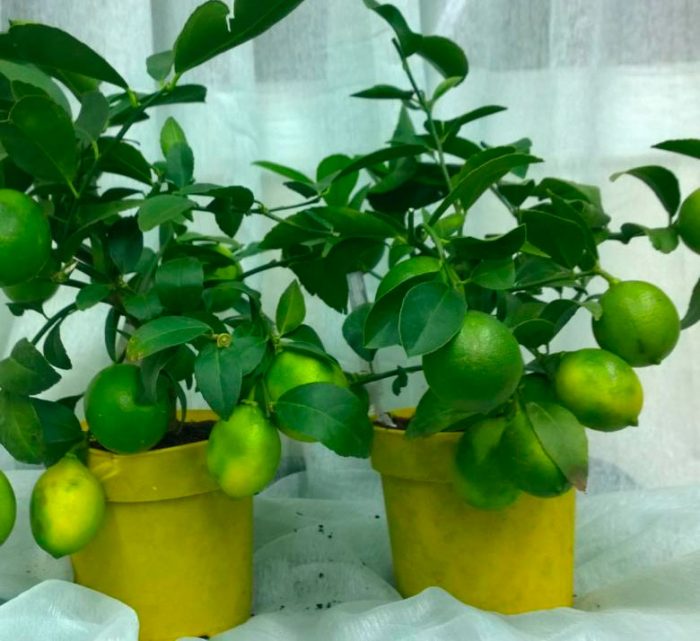

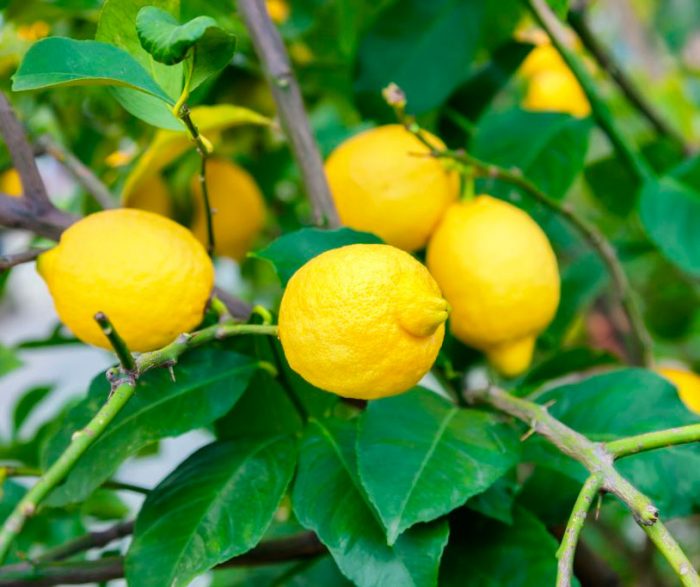

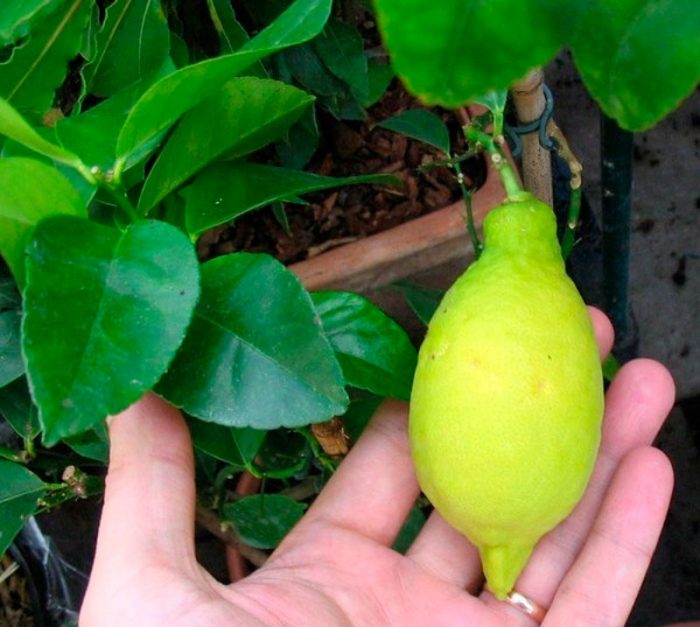
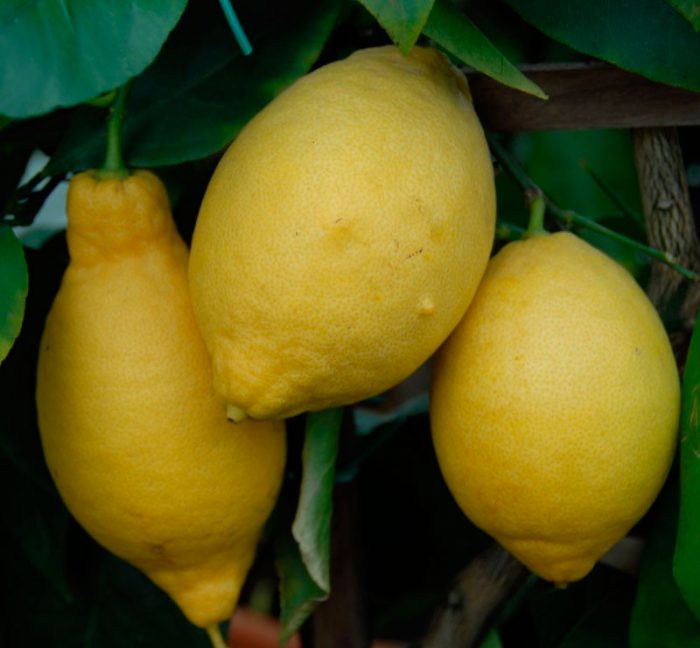
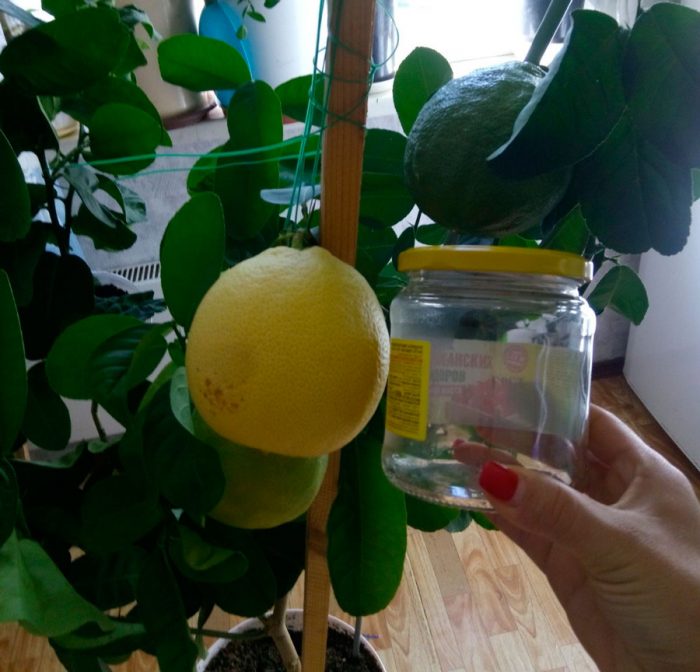

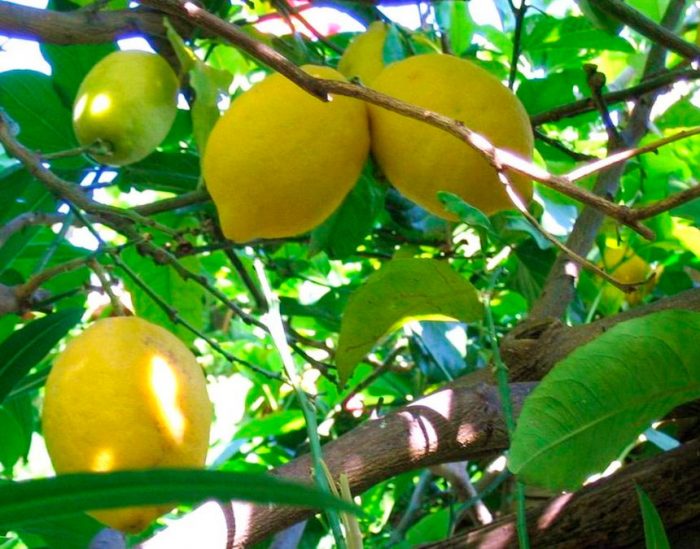
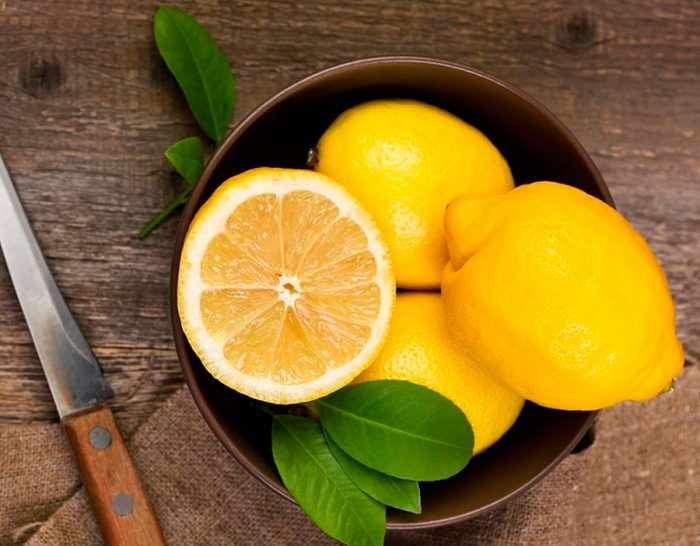

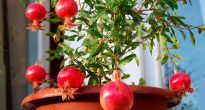





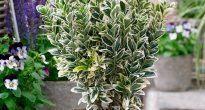

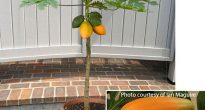

Agronov's fruit trees grow well at home. I grew a tangerine myself. Just be careful, buy only on the official website, there are many fakes that are very inferior in quality and do not grow.